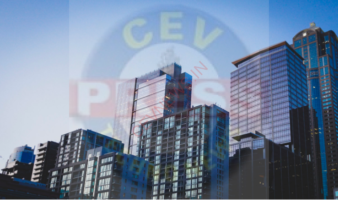FUNDAMENTALS OF THE COST APPROACH TO PROPERTY VALUATION
Fundamentals of the Cost Approach to Property Valuation in India
The Cost Approach is a fundamental method of property valuation widely used in India. It is particularly applicable for valuing new buildings, specialized properties, or properties with limited comparable sales data. This approach estimates the value of a property by determining the cost to replace or reproduce it, minus any depreciation. Below are the key aspects of the Cost Approach to property valuation in India.
1. Understanding the Cost Approach
The Cost Approach is based on the principle of substitution, which assumes that a rational buyer will not pay more for a property than the cost to acquire a similar property with the same utility. The approach is especially useful in situations where the property is unique, new, or there is little market data to compare with similar properties.
2. Steps in the Cost Approach
The Cost Approach involves several key steps:
- Estimate the Land Value: The first step is to estimate the value of the land as if it were vacant. This is done using the Market Approach, where comparable land sales are analyzed to determine the land’s value.
- Estimate the Cost of Improvements: The next step is to estimate the cost of reproducing or replacing the building and other site improvements. This includes:

- Reproduction Cost: The cost to create an exact replica of the existing structure using the same materials and construction standards.
- Replacement Cost: The cost to construct a building of similar utility using modern materials and standards.
- Estimate Depreciation: Depreciation refers to the loss in value from all causes, including physical wear and tear, functional obsolescence, and external obsolescence. The three main types of depreciation considered are:
- Physical Deterioration: The loss of value due to aging and physical wear and tear.
- Functional Obsolescence: The loss of value due to outdated design or features that are no longer desirable.
- External Obsolescence: The loss of value due to external factors, such as changes in the neighborhood or economic conditions.
- Calculate the Total Property Value: The final step is to add the land value to the depreciated cost of the improvements to arrive at the total property value.
3. Applicability of the Cost Approach in India
The Cost Approach is particularly applicable in the following scenarios in India:
- New Construction: It is ideal for valuing newly constructed buildings where there is no depreciation or the depreciation is minimal.
- Specialized Properties: Properties such as schools, hospitals, or government buildings, which have few comparable sales, are best valued using the Cost Approach.
- Historical Properties: The Cost Approach is also used for valuing historical or heritage properties, where the replacement cost needs to be carefully adjusted for the unique characteristics of the property.
4. Advantages of the Cost Approach
- Objectivity: The Cost Approach is considered one of the most objective valuation methods because it is based on tangible, quantifiable costs.
- Simplicity: It is straightforward to apply when the cost data is readily available, making it easier for valuers to explain and justify their valuation.
- Relevance for Insurance: The approach is highly relevant in determining the insurable value of a property, which is often based on the replacement cost.
5. Challenges in the Cost Approach
- Estimating Depreciation: Accurately estimating depreciation can be challenging, especially in older buildings or properties with unique characteristics.
- Market Fluctuations: The Cost Approach does not always reflect market conditions, as it focuses on the cost rather than what a buyer would be willing to pay.
- Land Value Estimation: Estimating the land value separately can be complex, especially in areas with limited land sales data.
6. Conclusion
The Cost Approach is a vital tool in the property valuer’s toolkit in India, particularly for specialized, new, or unique properties. While it has its challenges, the approach provides a reliable method of valuation when comparable sales data is unavailable or insufficient. Understanding and applying the Cost Approach effectively requires a deep knowledge of construction costs, land values, and depreciation factors specific to the Indian context.


